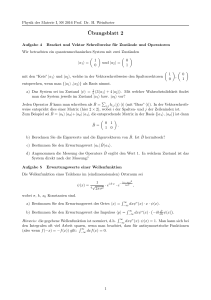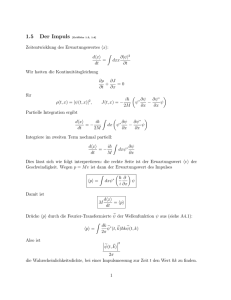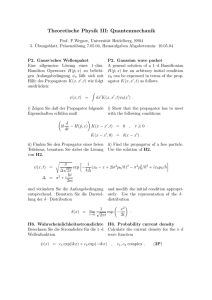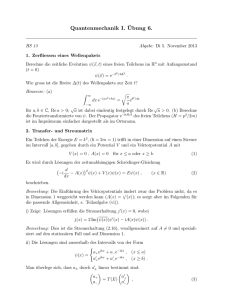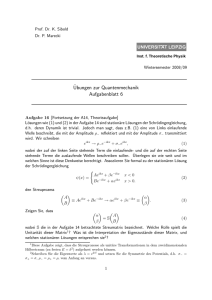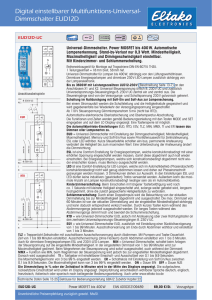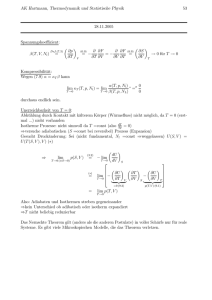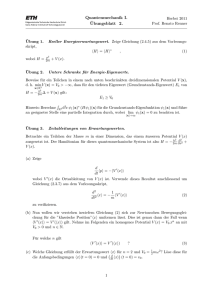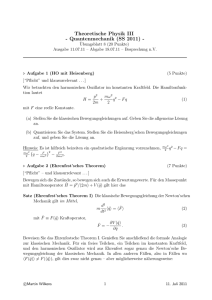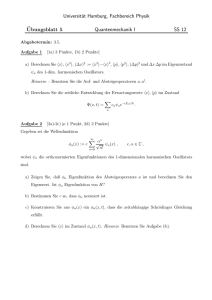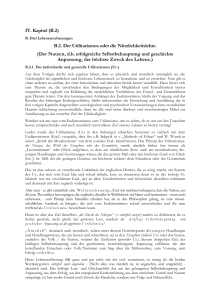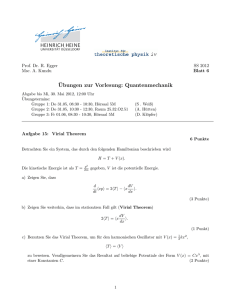Solutions 3
Werbung
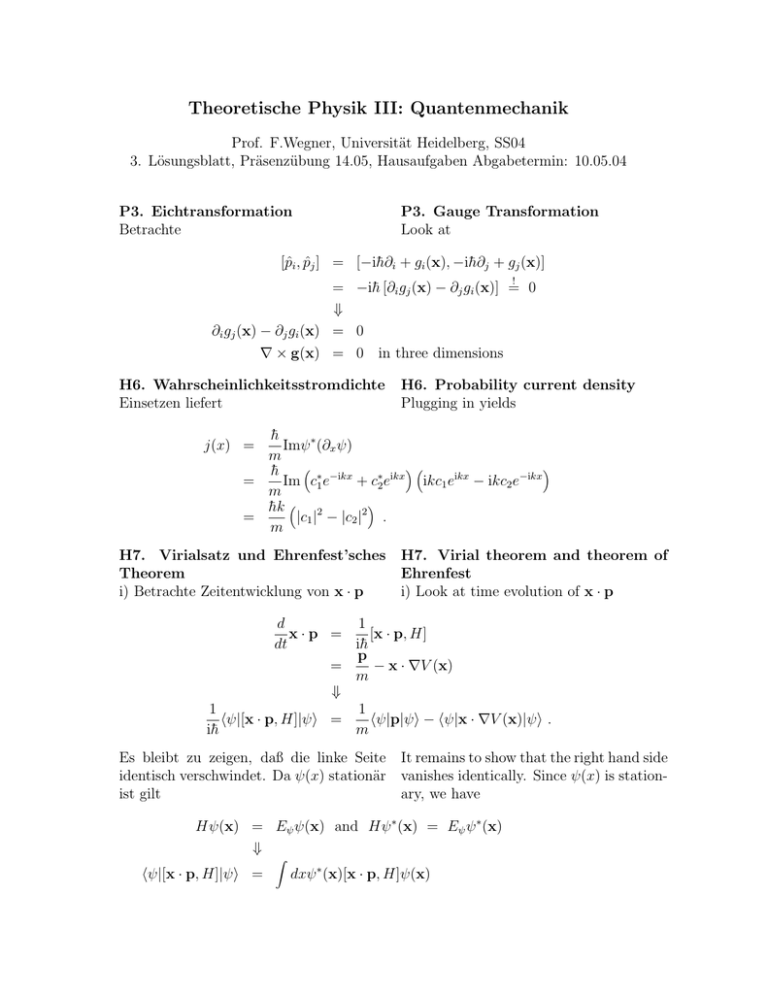
Theoretische Physik III: Quantenmechanik Prof. F.Wegner, Universität Heidelberg, SS04 3. Lösungsblatt, Präsenzübung 14.05, Hausaufgaben Abgabetermin: 10.05.04 P3. Eichtransformation Betrachte P3. Gauge Transformation Look at [p̂i , p̂j ] = [−ih̄∂i + gi (x), −ih̄∂j + gj (x)] ! = −ih̄ [∂i gj (x) − ∂j gi (x)] = 0 ⇓ ∂i gj (x) − ∂j gi (x) = 0 ∇ × g(x) = 0 in three dimensions H6. Wahrscheinlichkeitsstromdichte Einsetzen liefert H6. Probability current density Plugging in yields h̄ Imψ ∗ (∂x ψ) m h̄ = Im c∗1 e−ikx + c∗2 eikx ikc1 eikx − ikc2 e−ikx m h̄k 2 = |c1 | − |c2 |2 . m j(x) = H7. Virialsatz und Ehrenfest’sches H7. Virial theorem and theorem of Theorem Ehrenfest i) Betrachte Zeitentwicklung von x · p i) Look at time evolution of x · p 1 d x·p = [x · p, H] dt ih̄ p − x · ∇V (x) = m ⇓ 1 1 hψ|[x · p, H]|ψi = hψ|p|ψi − hψ|x · ∇V (x)|ψi . ih̄ m Es bleibt zu zeigen, daß die linke Seite It remains to show that the right hand side identisch verschwindet. Da ψ(x) stationär vanishes identically. Since ψ(x) is stationist gilt ary, we have Hψ(x) = Eψ ψ(x) and Hψ ∗ (x) = Eψ ψ ∗ (x) ⇓ hψ|[x · p, H]|ψi = Z dxψ ∗ (x)[x · p, H]ψ(x) = Eψ Z ∗ dxψ (x) (x · p) ψ(x) − = (Eψ − Eψ ) = 0 Z Z dxψ(x) (x · p) Hψ ∗ (x) dxψ ∗ (x) (x · p) ψ(x) q.e.d. ii) Heisenberg Gleichung für L ii) Heisenberg equation for L 1 1 [x × p, p2 ] + [x × p, V (x)] ih̄ 2m 1 1 2 = [x, p ] × p + x × [p, V (x)] ih̄ 2m 1 = p × p − x × ∇V (x) m = −x × ∇V (x) q. e. d . L̇ = H8. Kumulanten i) Per definitionem χ(0) = 1. Ein zwei bzw. dreimaliges Ableiten ergibt i∂τ ln χ(τ ) τ =0 = = (i∂τ )2 ln χ(τ ) τ =0 = = (i∂τ )3 ln χ(τ ) τ =0 = = H8. Cumulants i) By definition we have χ(0) = 1. Taking the derivative once, twice or three times respectively yields i∂τ χ(τ ) χ(τ ) τ =0 hxi 1 1 (i∂τ )2 χ(τ ) − 2 (i∂τ χ(τ ))2 τ =0 χ(τ ) χ (τ ) 2 2 hx i − hxi i 3 h 1 2 (i∂τ )3 χ(τ ) − 2 (i∂τ )2 χ(τ ) (i∂τ χ(τ )) + 3 (i∂τ χ(τ ))3 τ =0 χ(τ ) χ (τ ) χ (τ ) 3 2 3 hx i − 3hx ihxi + 2hxi ii) Ausführen des Gauss’schen Integrals liefert ii) Performing the Gaussian integral yields ! 1 Z (x − x0 )2 √ χGauss (τ ) = dx exp − − ixτ 2σ 2 σ 2π ! σ2 2 = exp − τ − iτ x0 2 2 σ ln χGauss (τ ) = − τ 2 − iτ x0 . 2 Wir finden die Kumulanten: We find the cumulants C1 = x0 , C2 = σ 2 , C3 = 0, . . . , C∞ = 0 .
